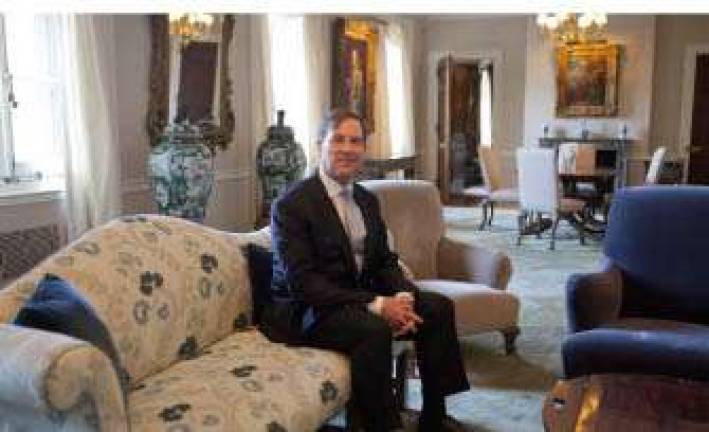Art To The Masses

Before he was accustomed to wearing a suit every day, Ian Wardropper fondly remembers spending hours studying at the Frick Art Reference Library during his earliest years as an art history graduate student at the Institute of Fine Arts in New York. Since being appointed museum director in of the Frick Museum in 2011, Wardropper has taken impressive strides at making the museum more relevant today..
One way he has made the museum more accessible is making the 13-story art reference library more inviting to the public. "It has remained somewhat of a secret because it used to be more private in the old days, and slightly
forbidding. I used to show up to study, and they would insist that men wear jackets and women wear skirts," he explained. "That's changed, and we've made it open to everyone. It's one of the finest art reference libraries in the world, and has the charm of its 1935 beginnings with lots of beautiful natural light."
The Frick has remained a small but sumptuous museum since its creation almost 80 years ago. Wardropper has found a balance of respecting the buildings historical significance and introducing more modern curating techniques. Much of his inspiration is drawn from working directly with the museum curators. He often applies is own experience as a curator to each exhibit, and enjoys helping out with exhibit installation as often as he can.
Within his first year as director, Wardropper saw major success with the "Renoir, Impressionism, and Full-Length Painting" exhibit in February of 2012. The Frick saw a spike in museum memberships, and he explained it was so busy that they had to start turning people away. This is an early example of how he has reintroduced the Frick to the public with open arms.
Saddened by the idea of turning people away, he began brainstorming ways to make the museums audience bigger than its small capacity. At a senior staff meeting he introduced the idea of live-streaming lectures and exhibition openings online, allowing the Frick to reach a much larger, more global audience. From a high school art class in Westchester, to an art historian in India thousands of people are now able to be a part of the museum.
Wardropper is inspired by the Upper East Side community on his walk to work every morning, and hopes the museum can give back the same amount of support that he has received. He has introduced the museum to younger generations by adding new educational programs. The Frick now offers classes for middle and high school students, after school programs, sketching classes in the gallery for college students, and continuing education classes for adults.
Since the Frick is such a small museum, Wardropper has had rethink how the museums can use its scale as an advantage. "I've had to really think more about what this place can do, that a larger museum can't," he explained. "The Frick has an impressive track record of small exhibitions that are really focused and edited. It allows people to really pay attention to every single work of art that is in the show."
Wardropper and the Frick's curators have seen major success with several exhibits including the Renoir, Impressionism, and Full-Length Painting, Masterpieces of Dutch Painting from Mauritshuis, which featured Vermeer's "Girl with a Pearl Earring," and a small show of the German goldsmith Johann Neuber's beautiful gold boxes. They created an iPad app to correlate with the Neuber show, which received rave reviews from Roberta Smith in the New York Times.
Since his start as museum director, Ian Wardropper has undoubtedly brought a breath of fresh air to the 100-year-old house, reintroducing it to its neighbors on the Upper East Side. "The Frick can maintain its quality, excellence, and traditions but we try to look for new avenues that will make it more interesting and refresh the space. That has been my approach."